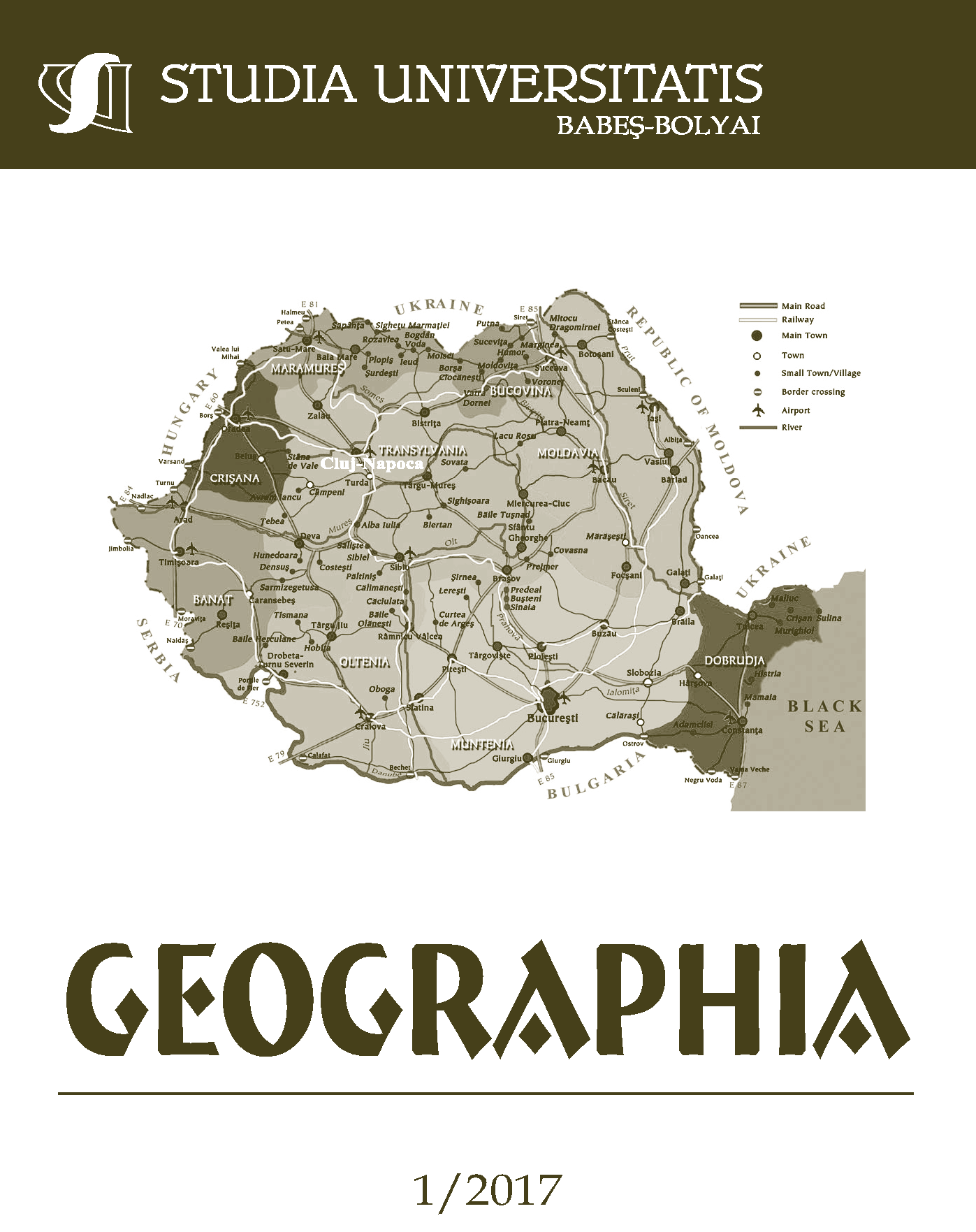WOODEN CHURCHES OF LĂPUȘ LAND – SUSTAINABLE TRAVEL DESTINATIONS
DOI:
https://doi.org/10.24193/subbgeogr.2017.1.09Keywords:
sustainable tourist destinations, wooden churches, conservation, tradition, faith.Abstract
The church is a holy institution founded for the salvation of people and consists of believers who profess the same faith, being an active organ in continuing the work of salvation in the world, where human life is united with the divine life. The church is joined in meditation, leads to the knowledge of itself in communion with heaven, with something that is not tangible, something that goes beyond human understanding and reason; in church we keep quiet to hear God`s voice in our consciousness. Lăpuș Land is one of the most sustainable tourist destinations which have more than twenty wooden churches, masterpieces of outstanding artistic and technical achievements, elements that are harmoniously integrated in the specific land, evidencing the faith and unity of the Romanian people. The oldest wooden church in Lăpuș Land is the wooden church in Rogoz (1663), included on the list of World Heritage Sites, followed by four other churches that belong to the seventeenth century: Sfinții Arhangheli in Libotin (1671), Sfânta Parascheva in Rogoz (1695), Adormirea Maicii Domnului in Lăpuș (1697) and Biserica Sfinții Arhangheli in Vima Mică. Eleven churches belong to the eighteenth century: Dobric (1701), Drăghia (1706), Cupșeni (1733), Răzoare (1740), Dobric (1740), Ungureni (1760), Larga (1771), Libotin (1776), Inău (1778), Cupșeni (1778), Boiereni (1782). During the nineteenth century, the faith and unity of the nation is strengthened by the building and conservation of eight churches: Poiana Botizii (1825), Peteritea (1842), Groape (1842), Stoiceni (1860), Costeni (1875), Răzoare (1875), Costeni (1888) and Fântânele (1900). Three elements were and are essential and obligatory for church building: Man, Wood and God. The paper will present the manner in which these places become tourist attractions and what they need to be a sustainable tourist destination.References
Bott, Mărioara Rozica (2014). Vacanță în Țara Lăpușului, Edit. Galaxia Gutenberg, Târgu Lăpuș.
Steinbrucker, Ch. (1932). Die Denkmalpflege, Berlin-Vienna and Die Christliche Kunst, München, apud Coriolan Petranu (1934), Bisericile de lemn ale românilor ardeleni, Sibiu.
Giurescu, C. (1976). Istoria pădurii româneşti din cele mai vechi timpuri până astăzi, second revised edition, Edit. Ceres, Bucharest.
Alazard, J. (1933). Théodore Chasseriau, Gazette des beaux-arts, Paris.
Bloch, O. (1932). Die Weltkunst, Berlin, apud Coriolan Petranu (1934), Bisericile de lemn ale românilor ardeleni, Sibiu.
Petranu, C. (1934). Bisericile de lemn ale românilor ardeleni, Krafft Drotleff, Sibiu.
Henry, P. (1930). Les églises de la Moldavie du Nord, PhD thesis, Sorbonne, Paris.
Retegan, M. (1995). Arta prelucrării lemnului, Baia Mare.
Rus, D., Bott, Mărioara Rozica (2000). Țara Lăpușului, Edit. Corvin, Deva.
Stoica, Georgeta, Pop, M. (1984). Zona etnografică Lăpuş. Edit. Sport-Turism, Bucharest.
http://primariatargulapus.ro/, accessed on September 2, 2016.
Downloads
Published
How to Cite
Issue
Section
License
Copyright (c) 2017 Studia Universitatis Babeș-Bolyai Geographia

This work is licensed under a Creative Commons Attribution-NonCommercial-NoDerivatives 4.0 International License.





 ©Studia Universitatis Babeş-Bolyai Geographia. Published by Babeș-Bolyai University.
©Studia Universitatis Babeş-Bolyai Geographia. Published by Babeș-Bolyai University.